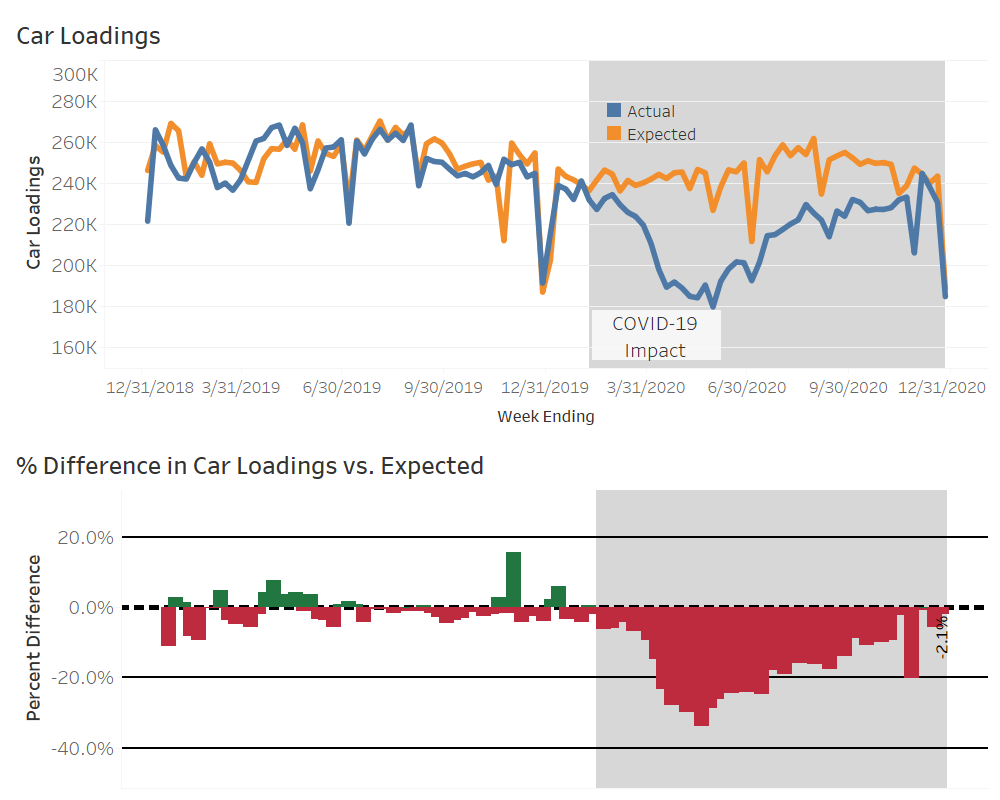Railroad car loadings have mostly recovered

Year-over-year comparisons can attribute too much of a volume decline to COVID-19. That is what we showed at the beginning of the pandemic, with predictive analytics applied to railroad car loadings data from the American Association of Railroads (AAR). The model projected that demand for 2020 was expected to be slightly down even without the pandemic. So comparisons against a model, serving as a baseline, presented a more realistic gauge of the impact of COVID-19 on demand.
As 2020 has ended, we looked again to make that comparison, and found that the gap between actual and expected has narrowed significantly in the last quarter of the year, such that in the final weeks, demand is down only by a small percent. See the lower portion of the graph, with the red bars indicating the percent difference versus model-expected.
On December 30th, the AAR reported in their weekly news release that for the final week of the year (ending Dec 26th) they found a 3.4% decline in car loadings versus the same week in 2019. But as you will understand by reading our original post, not all of that decline is attributable to COVID-19. The model suggests that the difference is closer to 2.1%.
You can see that the red bars have been shrinking recently. What will be interesting to see in the coming weeks is whether those bars will continue to shrink and eventually turn green, indicating a positive difference versus expected, and presumably, an economy on a recovery upswing.